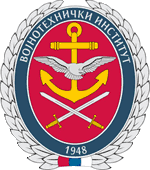|
REPUBLIC OF SERBIA MINISTRY OF DEFENCE
MINISTRY OF DEFENCE Material Resources Sector Defensive Technologies Department
|
Evaluation of Self-organizing UAV networks in ns-3
School of Electrical Engineering, University of Belgrade, maksicn@etf.rs milan bjelica School of Electrical Engineering, University of Belgrade, milan@etf.rs
Abstract: UAVs (Unmanned Aerial Vehicles) are being increasingly used both for military and civilian applications. These so-called drones are starting to replace conventional aircrafts in reconnaissance and battle missions, rescue operations, wildlife protection, farming, movie making, and so on. The UAV self-organizing ad-hoc networks are suitable for a range of problems involving connectivity and information gathering. Although dedicated simulators for the UAVs are readily available, their communication aspects can be observed in more detail by network simulators. This paper discusses the use of the ns-3 open-source network simulator, which supports various routing protocols, wireless modulation schemes, channel propagation models, and queues; moreover, it enables definition of the UAV movement algorithms through mobility models and includes tools to visualize the UAV positions and connectivity. A simulation testbed for a typical reconnaissance and information gathering mission with a network of self-organizing UAVs that move autonomously, without being controlled by a human operator from the ground is described. Two movement control algorithms that tend to increase both coverage and connectivity – while keeping the algorithm simple and robust – are implemented and compared. Keywords: Unmanned aerial vehicles, ns-3 simulator, mobility, coverage, connectivity.
|
|||||
|
||||||

